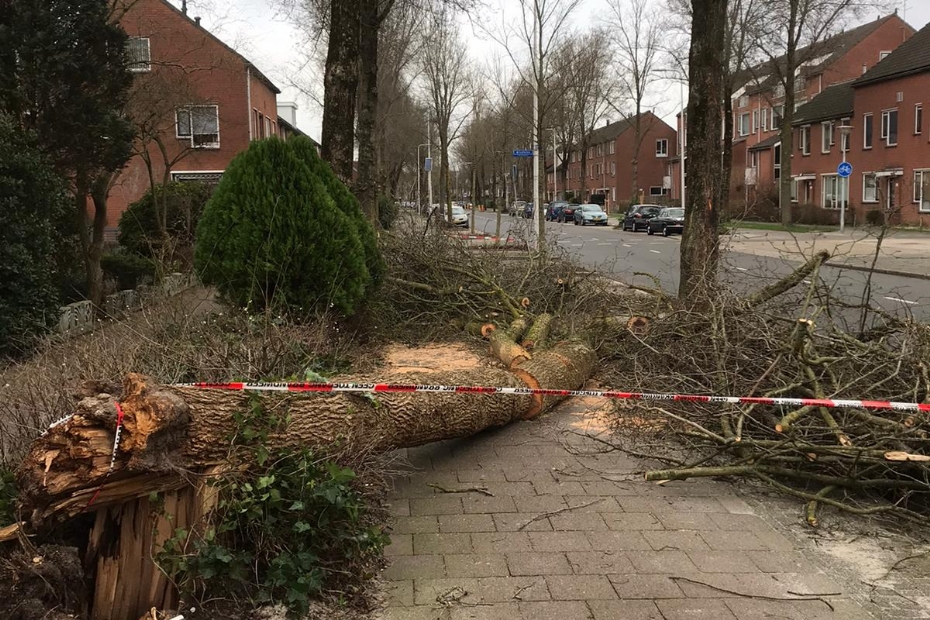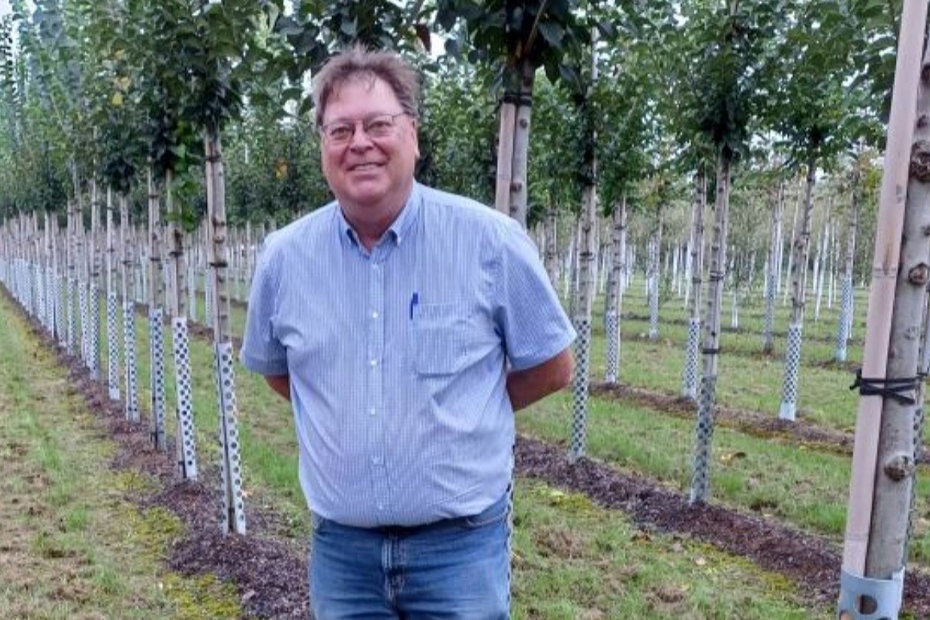Root authenticity: important but underrated quality aspect |
|
|
|
|
 |
| 119 sec |
Careful grafting, or on its own roots
Signs of incompatibility are increasingly appearing in trees. The detachment of scion and rootstock has serious consequences for public spaces. This problem is known to affect elms and oaks (including 'Koster' columnar oaks), but is now also emerging in other species. During the mini symposium on incompatibility in avenue trees, organised by Boomzorg and Boom in Business, it was noted that Tilia tomentosa 'Brabant', Tilia cordata, Robinia and Fraxinus excelsior are also showing such issues more frequently. Ronnie Nijboer, incompatibility specialist at Ebben Nurseries, encourages growers to experiment with propagating vulnerable species through cuttings.
| Incompatibility in a linden tree |
This trade journal spoke with Ronnie Nijboer of Ebben Nurseries, a specialist in delayed incompatibility. Since 2001, he has worked with the Bonte Hoek nurseries and later with Noordplant on propagating elms from cuttings as part of the fight against Dutch elm disease. One outcome is the specialisation in Resista elms grown on their own roots.
Propagation by cuttings
In this process, propagators cut healthy shoots just below a node and remove the lower leaves. They may apply a rooting stimulant and place the cuttings in a moist growing medium, such as potting compost. With sufficient light and humidity, the cuttings develop roots within a few weeks and can then be transplanted. Nurseries like Ebben grow the cuttings further by replanting them in the open ground or in larger (trench) containers. This method, initiated by Nijboer to combat incompatibility, has proven that elms can be successfully propagated via cuttings. Nijboer now encourages trials with other tree species that are prone to incompatibility.
 | | Propagating Resista elms |
|
|
Duty of care and safety
With delayed incompatibility, issues may only surface 20, 30 or even 40 years after a tree has been grafted. "This means we are now seeing problems in scion-rootstock combinations made decades ago, for example in cultivars grafted in the 1970s, '80s and '90s," Nijboer explains. "This is only now becoming apparent, and we can expect to see more of it in the years to come."
Why wasn't this noticed before? "It probably received less attention back then, and people just shrugged," Nijboer smiles. "Trees that failed due to incompatibility were simply cut down and replaced. Nowadays, there is more focus on this issue due to legal responsibility and safety—not just in elms, where the issue has been known for decades, but now also in other tree species."
 | | Incompatibility in Ulmus hollandica 'Groeneveldt' |
|
|
|
|
"It's important that we also try propagating other tree species by cuttings"
| |
|
 | | Ronnie Nijboer |
|
|
Continue grafting, but with care
Because of these concerns, more designers and buyers—especially in municipalities—are becoming sceptical about grafting, says Nijboer. "They increasingly prefer original tree species over cultivars. A good example of the advantages of cultivars are Fraxinus excelsior 'Westhof's Glorie' and 'Altena', which produce less seed. That's a benefit in urban areas, where wild species can cause nuisance. Large amounts of seed can clog drains or blow into gardens, where seedlings then emerge.
So it's important that we also explore propagation by cuttings for other tree species."
As a leading nursery, Ebben wants to lead the way in tackling this issue. Nijboer: "That means we experiment with as many tree species and cultivars as possible propagated on their own roots. These trees are assessed at the nursery for anchorage and growth. Cultivars that don't perform well in this regard aren't suitable for own-root cultivation. It's still a minority, but more propagators are becoming interested in this method."
Thanks to these pioneers—propagators and avenue tree growers—more own-root propagated trees will likely become available over time. "Buyers should reward innovative nurseries with preferential purchase or a premium price," says Nijboer
| LOG IN
with your email address to respond.
|
|
|
| There are no comments yet. |
|
| |
Anyone can place small ads for free through their own account.
Place a free ad
|
|
|
|